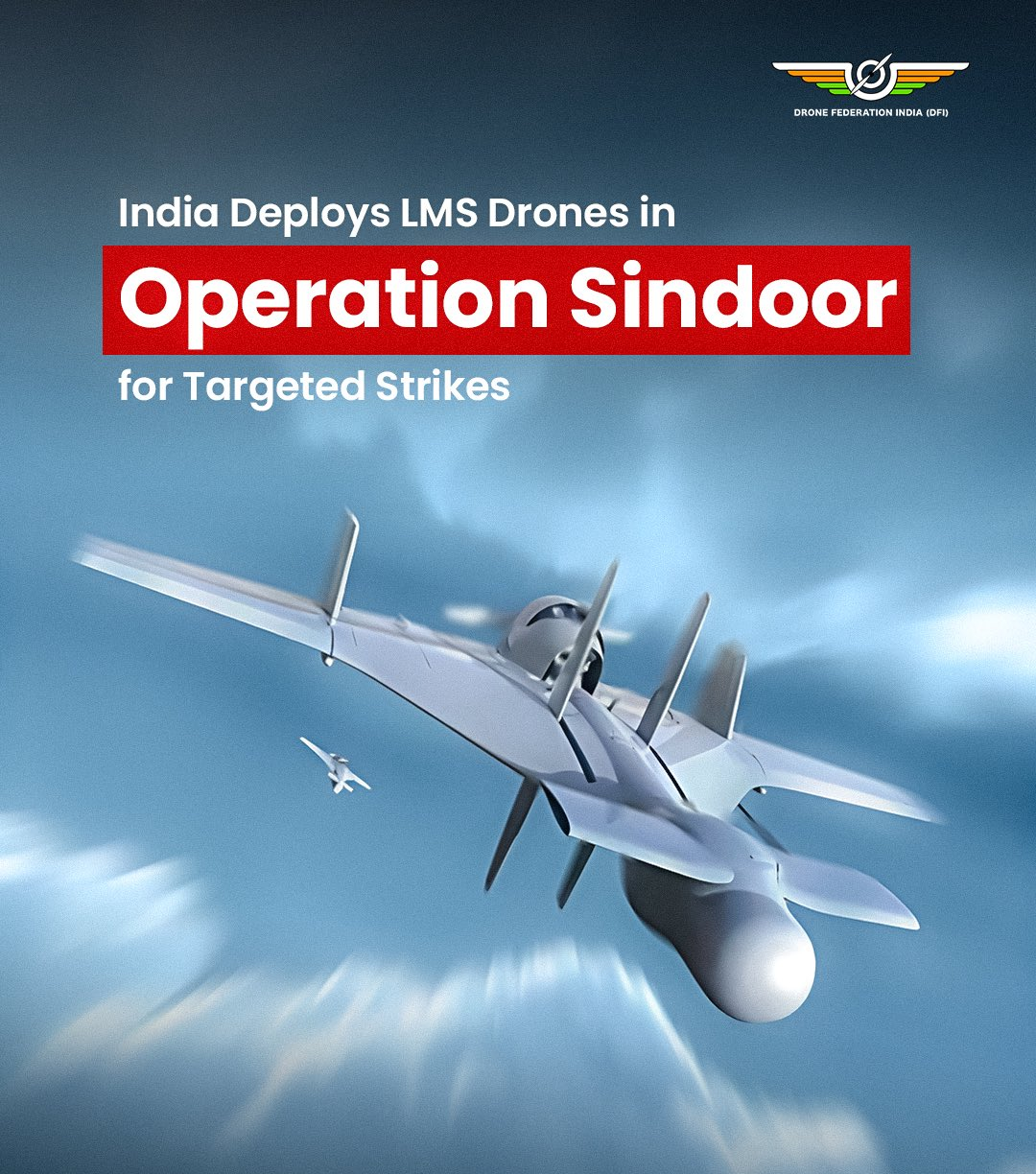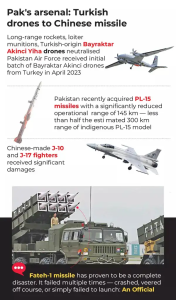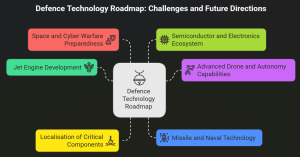Font size:
Print
Operation SINDOOR: A Powerful Leap Toward Aatmanirbhar Bharat in Defence Strategy
Operation SINDOOR: Driving India’s Inspiring March to Aatmanirbhar Bharat in Defence

Context: Operation SINDOOR, launched in May 2025, marked a turning point in India’s military strategy and symbolises a shift in Modern Warfare. It was a calibrated, non-escalatory response to the April 22 Pahalgam terror attack. Focused on the use of autonomous warfare, precision strikes, and indigenous technologies. Represented India’s transition from conventional response to technology-driven, strategic retaliation.
Technological Backbone of the Operation
- Unmanned Aerial Systems (UAS) and Loitering Munitions
-
-
- SkyStriker Drones: Jointly developed with Israel, manufactured in India.
- Nagastra-1: Indigenous GPS-guided loitering munition with high precision.
- Harop Drones: Israeli-origin, used to destroy radar and air defence systems.
-
- Integrated Air Defence Systems
-
- Akash Missile System: Indigenous, mobile, multi-target SAM with ECCM capabilities.
- Akashteer System: Enabled real-time coordination and 100% interception success.
- IACCS (Integrated Air Command and Control System): Backbone of net-centric operations, linking radars, airbases, and weapon platforms.

- Electronic Warfare and Satellite Surveillance
-
- DRDO EW Systems: Jammed enemy radars and missile guidance systems.
- ISRO Satellite Assets: Enabled real-time situational awareness and surveillance across 7,000 km coastline and northern borders.
- Fusion of space-based sensors and tactical decision-making enhanced operational accuracy.
Pakistan’s Response and Indian Defensive Success
- Pakistan’s Drone and Missile Offensive
-
-
- Attempted strikes using Shahpar-II, Bayraktar TB2, and Wing Loong II drones.
- Coordinated attacks on Srinagar, Jammu, Pathankot, Amritsar, Bhuj on 7–8 May.
-
- India’s Multi-Layered Defence Grid
-
- Legacy systems: Pechora, OSA-AK, LLAD guns.
- Modern systems: Akash-NG, S-400 Sudarshan Chakra.
- Integrated Counter-UAS Grid neutralised all threats; zero damage to Indian assets.
- Joint Force Coordination: Indian Army and Air Force coordinated to protect civilian and military infrastructure during May 9–10 retaliation attempts.
Indigenous Capability and Strategic Autonomy
- Post-2014 Reforms for Self-Reliance
-
-
- Focus on co-development, co-production, and IDDM (Indigenously Designed, Developed and Manufactured) technologies.
- Major reforms:
-
- Corporatisation of Ordnance Factory Board (OFB)
-
-
- Defence Industrial Corridors in Tamil Nadu and Uttar Pradesh
- iDEX (Innovations for Defence Excellence) initiative
-
- Key Indigenous Achievements and reasons
-
- LCA Tejas, Agni-V ICBM, ASAT missile
- Home-grown UAVs, loitering munitions, EW systems, missiles, and radars
- Rise of the Indian Drone Ecosystem
- Private Sector Participation
-
-
- Drone Federation of India (DFI): Represents over 550 companies and 5,500+ certified pilots.
- Vision: India as global drone hub by 2030.
-

- Enablers: Ease of Doing Business, Bharat Drone Mahotsav, PLI Schemes.
- Major Contributors
-
-
- Alpha Design Technologies: Partners with Israel for SkyStriker drones.
- Tata Advanced Systems, Paras Defence & Space Technologies, IG Drones: Key players in defence drone production.
-
- Market Growth
-
-
- India’s drone market is projected at $11 billion by 2030.
- Will constitute 12.2% of the global drone market.
-
- Policy and Export Boost for Defence Production
- Production Linked Incentive (PLI) Scheme for Drones (2021)
- Incentive of ₹120 crore over three years.
- Encouraged AI-powered drones, autonomous navigation, and local manufacturing.
- Record Domestic Production and Exports
- FY 2023–24: Indigenous defence production reached ₹1.27 lakh crore.
- FY 2024–25: Defence exports hit ₹23,622 crore, a 34x increase since 2013–14.
- Target by 2029: ₹3 lakh crore in production and ₹50,000 crore in exports.
Conclusion: Strategic Autonomy through Technological Superiority
- Operation SINDOOR was not just a military response, but a demonstration of strategic autonomy.
- Highlighted:
- Technological preparedness and precision warfare
- Indigenous capabilities across land, air, sea, space, and cyber domains
- Seamless civil-military-private sector integration
- Marks a paradigm shift towards a self-reliant India prepared for future conflicts shaped by autonomous, electronic, and digital warfare.
Embodies the spirit of Aatmanirbhar Bharat in national security.

Subscribe to our Youtube Channel for more Valuable Content – TheStudyias
Download the App to Subscribe to our Courses – Thestudyias
The Source’s Authority and Ownership of the Article is Claimed By THE STUDY IAS BY MANIKANT SINGH



